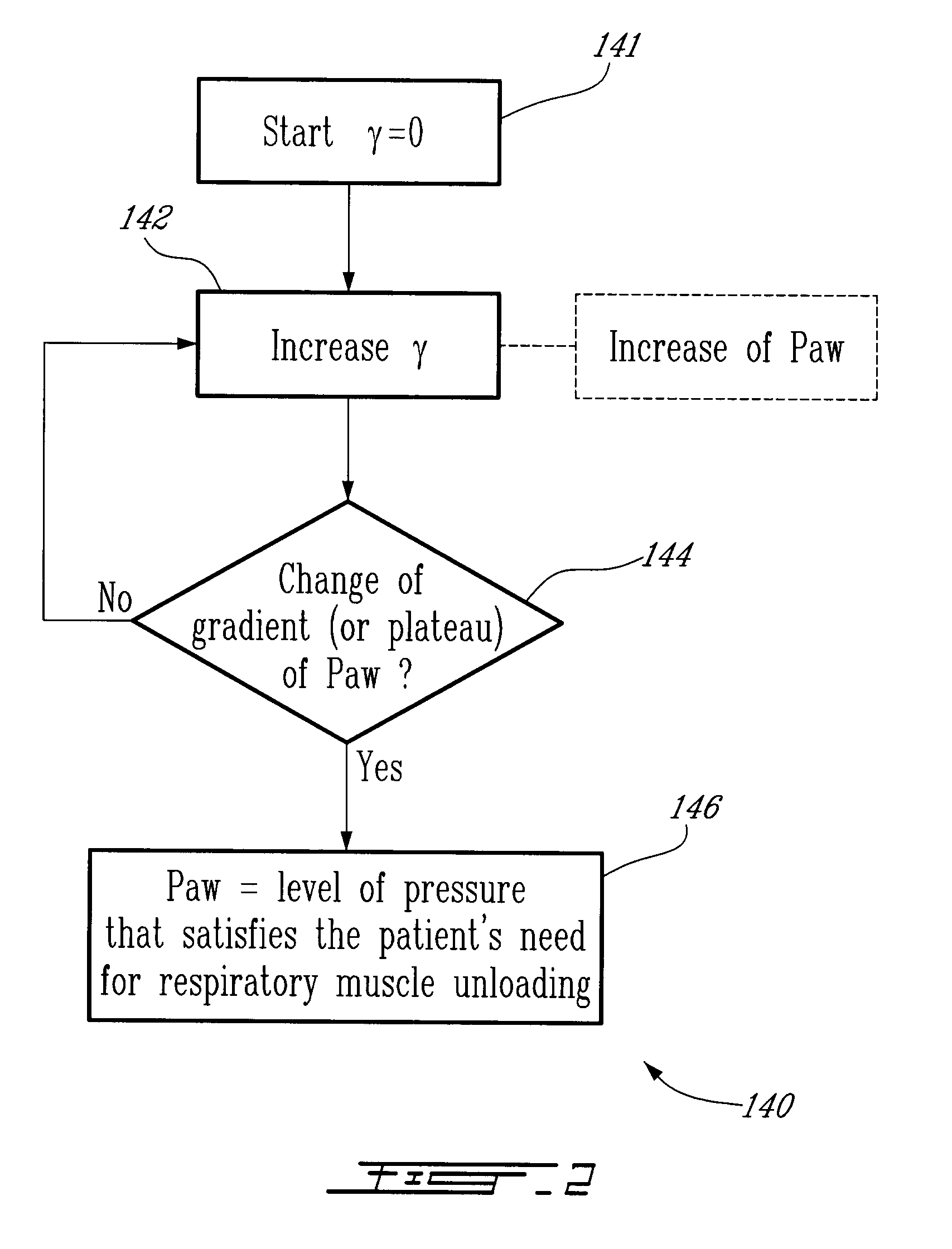Method and System for Determining Dynamically Respiratory Features in Spontaneoulsy Breathing Patients Receiving Mechanical Ventilatory Assist
a dynamic respiratory feature and mechanical ventilator technology, applied in the field of mechanical ventilatory assist, can solve the problems of inability to monitor and ensure the effectiveness of ventilatory assist, and inability to adequately ventilate the lungs
- Summary
- Abstract
- Description
- Claims
- Application Information
AI Technical Summary
Benefits of technology
Problems solved by technology
Method used
Image
Examples
Embodiment Construction
[0030]Generally stated, the following description is concerned with a non-restrictive illustrative embodiment of the present invention for:[0031]physiological determination of respiratory unloading, which corresponds to the determination of the range of applicable levels of respiratory assist from the level necessary to achieve the unloading of respiratory assist satisfying patients' respiratory demand, to the level that represents 100% of mechanical unloading of the respiratory muscles;[0032]determination of respiratory lung mechanics;[0033]determination of a level of positive end-expiratory pressure (PEEP) that is associated with the least impaired level of respiratory mechanics; and[0034]quantification of respiratory drive and partition of respiratory drive into chemical / habitual drive and load related drive;
in spontaneously breathing patients who receive mechanical ventilatory assist.
[0035]Furthermore, this non-restrictive illustrative embodiment according to the present inventi...
PUM
 Login to View More
Login to View More Abstract
Description
Claims
Application Information
 Login to View More
Login to View More - R&D
- Intellectual Property
- Life Sciences
- Materials
- Tech Scout
- Unparalleled Data Quality
- Higher Quality Content
- 60% Fewer Hallucinations
Browse by: Latest US Patents, China's latest patents, Technical Efficacy Thesaurus, Application Domain, Technology Topic, Popular Technical Reports.
© 2025 PatSnap. All rights reserved.Legal|Privacy policy|Modern Slavery Act Transparency Statement|Sitemap|About US| Contact US: help@patsnap.com



